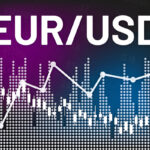Introduction: What is the Forex Market
The foreign exchange market (forex or FX) is the largest and most liquid financial market in the world, with a daily trading volume exceeding $7 trillion. Unlike traditional stock markets, forex has no centralized exchange. Instead, it operates 24 hours a day across a global network of banks, financial institutions, corporations, governments, and individual traders.
Forex trading involves buying one currency and selling another simultaneously. Traders speculate on the price movement of currency pairs such as EUR/USD, GBP/JPY, or AUD/CAD to generate profits.
Why the Forex Market Matters
Global Reach: Forex links international economies and reflects real-time geopolitical and economic shifts.
High Liquidity: Forex offers unmatched liquidity, ensuring tight spreads and fast execution.
24-Hour Access: Unlike other markets, forex is open from Sunday evening to Friday night, allowing flexible trading hours.
Volatility = Opportunity: Market volatility creates frequent trading opportunities for day traders, swing traders, and scalpers.
Key Forex Market Participants
1. Central Banks – Influence the market via monetary policies, interest rates, and interventions (e.g., Federal Reserve, ECB, BoJ).
2. Commercial Banks and Institutions – Provide liquidity and trade on behalf of clients or for profit.
3. Corporations – Engage in forex to hedge foreign currency exposures.
4. Retail Traders – Individual traders accessing the market via brokers and trading platforms.
How Forex Trading Works
Forex is traded in currency pairs. Each pair consists of a base currency and a quote currency.
Example: In EUR/USD = 1.1200, 1 Euro (EUR) = 1.1200 US Dollars (USD).
Types of Currency Pairs:
Major Pairs: Include the USD and are the most liquid (e.g., EUR/USD, USD/JPY).
Cross Pairs: Do not involve the USD (e.g., EUR/GBP, AUD/NZD).
Popular Forex Trading Strategies
1. Day Trading – Open and close positions within the same day.
2. Swing Trading – Hold trades for days or weeks to capture medium-term trends.
3. Scalping – Make multiple trades in a short time, targeting small price moves.
4. Position Trading – Long-term trades based on macroeconomic fundamentals.
Essential Forex Trading Concepts
1. Pips and Lots
Pip (Percentage in Point): The smallest price change in a currency pair.
Lot: A unit of measurement (Standard = 100,000 units, Mini = 10,000, Micro = 1,000).
2. Leverage
Allows traders to control larger positions with smaller capital. High leverage increases profit potential and risk.
3. Margin
The capital required to open a leveraged position. Falling below margin levels can trigger a margin call or liquidation.
4. Bid/Ask Spread
The difference between the buying (ask) and selling (bid) price. Tight spreads are favorable.
Factors That Move the Forex Market
1. Interest Rates – Central bank decisions heavily influence currency value.
2. Economic Data – GDP, inflation, unemployment, and retail sales all impact currency strength.
3. Geopolitical Events – Elections, wars, trade wars, and global tensions trigger volatility.
4. Market Sentiment – Risk-on or risk-off moods dictate capital flows into safe-haven or riskier currencies.
Technical vs. Fundamental Analysis
- Technical Analysis
Involves studying price charts, trends, and indicators (like RSI, MACD, Fibonacci) to forecast future price action.
- Fundamental Analysis
Evaluates economic indicators, monetary policy, political events, and fiscal trends to gauge a currency’s intrinsic value.
Pro Tip: Successful forex traders often combine both approaches for a well-rounded strategy.
Choosing a Forex Broker
Here’s what to look for:
Regulation: Choose brokers regulated by reputable bodies (e.g., FCA, ASIC, CySEC).
Low Spreads & Commissions: Maximize your returns.
Advanced Trading Platforms: MetaTrader 4/5, cTrader, or proprietary web-based platforms.
Educational Tools: Webinars, tutorials, and demo accounts.
Fast Execution: Especially important for scalping or high-frequency trading.
Customer Support: Responsive support in your preferred language.
Common Forex Trading Mistakes to Avoid
Overleveraging: High leverage magnifies both profits and losses.
Ignoring Risk Management: Always use stop-loss and position sizing rules.
Trading Without a Plan: Emotional decisions can lead to big losses.
Chasing Losses: Stick to your strategy, not your emotions.
Ignoring News: Economic calendars and headlines can move markets in seconds.
How to Start Trading Forex (Step-by-Step)
1. Educate Yourself – Learn the basics of forex, technical/fundamental analysis.
2. Choose a Broker – Ensure it’s regulated and suits your trading style.
3. Open a Demo Account – Practice risk-free before going live.
4. Develop a Trading Plan – Define entry/exit rules, risk, and goals.
5. Start Small – Begin with small positions and scale up with experience.
6. Evaluate and Learn – Keep a trading journal and review your trades regularly.
Conclusion: The Road to Becoming a Successful Forex Trader
Forex trading offers immense opportunities—but also considerable risks. It’s not a get-rich-quick scheme. Success requires education, discipline, and a well-researched trading plan. By mastering risk management, staying informed, and continually improving your strategy, you can build a sustainable trading career in the world’s most dynamic market.
[sc_fs_multi_faq headline-0=”h2″ question-0=”Is forex trading risky?” answer-0=”Yes. It’s highly speculative and involves risk of loss. Risk management is essential to protect your capital.” image-0=”” headline-1=”h2″ question-1=”What’s the best time to trade forex?” answer-1=”The London and New York sessions (8 AM–12 PM EST) are most active and offer high liquidity.” image-1=”” headline-2=”h2″ question-2=”Can I make a living from forex trading?” answer-2=”Yes, but it takes time, capital, skill, and discipline. Most successful traders treat it as a business, not a gamble.” image-2=”” headline-3=”h2″ question-3=”How much money do I need to start trading forex?” answer-3=”You can start with as little as $100 with a micro or cent account, but $500–$1000 is recommended for meaningful returns.” image-3=”” count=”4″ html=”true” css_class=””]









